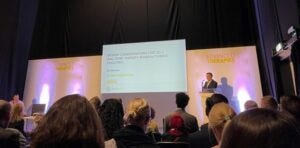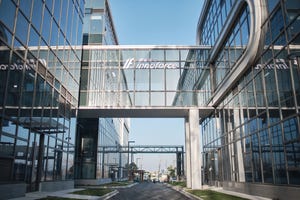
There are obvious reasons a special design needs to be applied to the design of a cell and gene therapy (CGT) facility and flexibility is one of them, says Scitech Engineering.
With increasing demand for capacity and capability in the CGT space and the US Food and Drug Administration (FDA) predicting that there will be 25 newly approved products by 2025, Ali Bahari, bioprocess design consultant at Scitech Engineering said it is no surprise that “lots of places are [adopting] a ‘design and park’ approach” when planning their facility buildouts.
Speaking at Advanced Therapies 2023 in London, UK yesterday, Bahari said the approach means a company can design a facility and then “press the button and go” once positive clinical results emerge.

Ali Bahari presenting at ATW 2023, London. Image c/o Millie Nelson
While the design of any facility for any modality requires a specificity, when thinking of a CGT plant “there are obvious reasons a special design needs to be applied and flexibility needs to be built throughout the process, product, and facility.”
The need for flexibility, according to Bahari, comes from “working with the unknown in terms of your product, modality and different products that might come through your facility” when dealing with CGTs.
He told the audience there are typically “two methods of construction used these days, stick built and pre-fabricated.”
Bahari outlined the pre-fabricated construction method can make it quicker to get to market due to less site work required and said, “it can be replicated for multiple sites.” However, with a pre-fabricated site, you are not always guaranteed flexibility.
Though “stick build may be more expensive and take more time to construct [it is] less restrictive for design [and] generally less cost per clean room square meter.” He added, by starting from the ground up you are able to have more flexibility, “which could lower the cost burden at the end of the day.”
About the Author
You May Also Like









